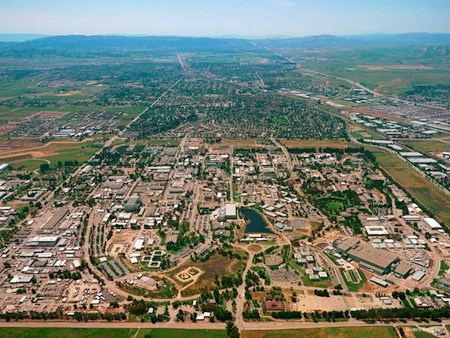UC National Laboratories
Lawrence Livermore National Laboratory (LLNL)
Overview
At the government's request, Ernest Orlando Lawrence and physicist Edward Teller founded LLNL in 1952 as an offshoot of the Berkeley laboratory. Located on one square mile about 50 miles southeast of San Francisco, the Livermore lab has become one of the world's premier scientific centers, where cutting-edge science and engineering in the interest of national security is used to break new ground in other areas of national importance, including energy, biomedicine and environmental science.
Major laboratory work in recent years has included stockpile stewardship; nonproliferation and arms control; magnetic and laser fusion energy; and environmental restoration and waste management.
The lab has pioneered ways to predict where the wind will carry chemicals or radioactivity after an accident or an attack so that authorities can tell people in one area that they're safe but in another area that they should stay inside. It developed a laser-based system now in clinical trials to break up the blood clots that cause stroke and a biopsy system that may eventually be used to improve the diagnosis of breast cancer.
As part of its national-security mission, Livermore has developed a network of bio-detectors – something like smoke detectors for dangerous bacteria – that could be placed in airports, stadiums or convention halls to signal a bio attack or other problem.
In May 2007, the U.S. Department of Energy announced that Lawrence Livermore National Security (LLNS), LLC was selected to be the management and operations contractor for the Livermore lab, effective October 1, 2007. LLNS includes the University of California, Bechtel National, Inc., The Babcock & Wilcox Company, URS Energy & Construction, Inc. and Battelle.

